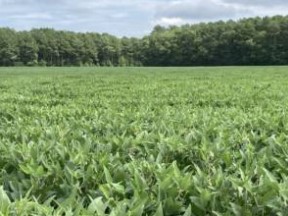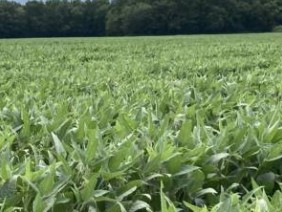By Cory Atkins
It’s still hot, though a bit of relief may be coming. For most of the past month, temperatures have been in the mid-30°C, or above 90°F. But with the humidity, it’s felt like more than 38°C or 100°F.
We had a few spotty rain showers during much of July, but in early August, a hurricane moved through Chesapeake Bay and across Delaware, dropping between 0 and 12.5 cm, or 0 and 5 inches, of rain. That was the first significant amount of rain we’ve gotten in about a month.
The lack of rain meant that irrigation was running throughout the month of July. My irrigation pivots require constant monitoring to turn them on and off as required by the crops and to make repairs as needed. Fortunately, those pivots remained standing during the hurricane. Irrigating keeps me very busy, so the storm provided a bit of relief from that. I kept the irrigation off for at least the following week.

Overall, our crops look fair given the conditions we’ve had this season. My early-planted soybeans look good and have pods set and growing. The double-crop soybeans are flowering. The soybeans receive damage from deer that like to eat them, but every year it seems like that damage gets worse.

My corn took a beating during the hurricane, with quite a bit of leaf damage, but it all remained standing, which is promising. All the corn has ears growing, and it will likely be ready to harvest in early to mid-September. The irrigated corn looks decent, and I treated it with fungicide and insecticide in mid-July to protect plant health and control insects to help it remain standing during major storms. It is now at a point in the season where it will need less irrigation to finish the crop. The dryland corn is hit-and-miss as to how well it’s doing, related to the number of spotty showers in those fields earlier this summer.
Click here to see more...